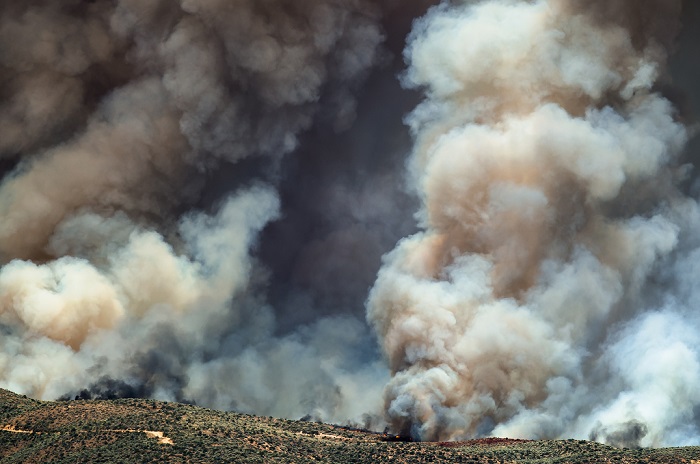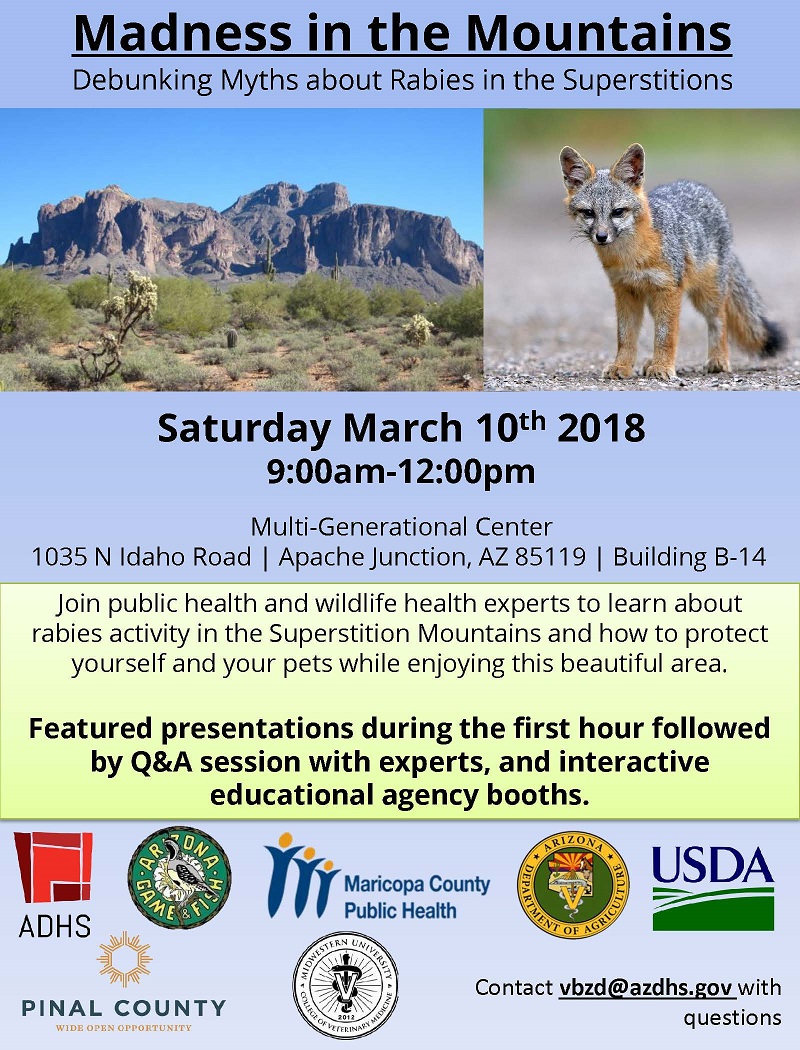 Arizona may be known for its deserts, but forests make up nearly 27 percent of Arizona’s land. Recently, several wildfires have arisen across the state. By June 28, the Goodwin Fire in Yavapai County has spread to more than 20,000 acres. The Saddle Fire has also grown to nearly 5,000 acres in Cochise County. Evacuations have been ordered for towns near State Route 69. Governor Ducey has declared a State of Emergency for Yavapai County for the Goodwin Fire.
Arizona may be known for its deserts, but forests make up nearly 27 percent of Arizona’s land. Recently, several wildfires have arisen across the state. By June 28, the Goodwin Fire in Yavapai County has spread to more than 20,000 acres. The Saddle Fire has also grown to nearly 5,000 acres in Cochise County. Evacuations have been ordered for towns near State Route 69. Governor Ducey has declared a State of Emergency for Yavapai County for the Goodwin Fire.
ADHS is supporting the incident by coordinating with multiple state and local agencies on response efforts to keep people safe. Our Public Health Emergency Preparedness Bureau has activated our Health Emergency Operations Center for the fires. We have been coordinating with local aid officials to help meet evacuations, shelter, and other health needs.
Behind the scenes, ADHS is working to ensure continuation of WIC services for those impacted by fires in Arizona. Our Environmental Health Team is monitoring air quality information from air monitors near the wildfires to help assess the health risk and support messaging to protect impacted populations. Particulate matter is the main health concern from wildfire smoke when exposed for a few hours to weeks. What makes up the particles depends on vegetation burned and weather factors. Particulate matter can irritate the eyes, nose, and throat.
Carbon monoxide, a colorless and odorless gas, can also be created by wildfires. The highest levels occur in close proximity to a fire. People close to a fire may experience headache, weakness, dizziness, and nausea from exposure to high levels of carbon monoxide. Some people may be more sensitive to the effects, such as children whose lungs are still developing, pregnant women, older adults, and individuals with respiratory diseases.
There are a few simple steps you can take to reduce smoke exposure including paying attention to local air quality reports, remaining indoors if advised, and staying aware of emergency alerts for evacuation notices. If you are traveling through a smoke impacted area to evacuate, recirculate the air-conditioning in your vehicle to prevent additional smoke exposure. If you are in a wildfire prone area, we have materials to help learn how to protect yourself and your family from/during a wildfire, evacuate safely, and how to stay healthy when you return home.












Wow! Helpful precautions to escape from Wildfires. I really appreciate for this informative post and thank you very much for sharing this blog post. Is there any other toxic gas than CO present in Wildfires?
Hello, thanks for your question. Wildfire smoke usually consists of very small particles, liquid droplets, and gases such as carbon monoxide, carbon dioxide, and other volatile organic compounds such as formaldehyde and acrolein. Many of these components can be respiratory irritants. Contents of the smoke may also depend on substance that is burning.
It is important to avoid breathing wildfire smoke as it may cause symptoms such as chest tightness, shortness of breath, wheezing, coughing, respiratory tract and eye burning, chest pain, dizziness or lightheadedness, and other symptoms. Asthma symptoms may also flare up. According to the Centers for Disease Control and Prevention, the risk of developing cancer from short-term exposures to smoke is very small.
More information can be found here: https://www3.epa.gov/airnow/wildfire_may2016.pdf
Thanks Cara for posting this informative Post about the helpful precaution to avoid wilderness and their evil deadly effects.However, I have researched almost a dozen article to find what are the circumstances by which the fire got spread in the forest of the Arizona.It would be great if you can brief a little about Fire in forests.
Thanks once again.
Good afternoon Suraj,
Thank you for the question. All fires are unique and can behave differently depending on factors such as changes in the weather, vegetation burned, and terrain. Therefore, it may be helpful to look at the circumstances of individual fires in the state. You can visit the Inciweb Arizona website to view current wildfire activity throughout the state. The site is maintained by wildfire agencies. The website has specific fire overviews, including the cause, origin date, type of vegetation burning, and how the weather is affecting the fire. The Department of Forestry and Fire Management also distributes a summary report of current fires in the state. If you are interested in the latest emergency bulletin updates about a fire you can visit the Arizona Emergency Information Network (AzEIN). Here you will find emergency updates, preparedness advice, hazards, and related resources.